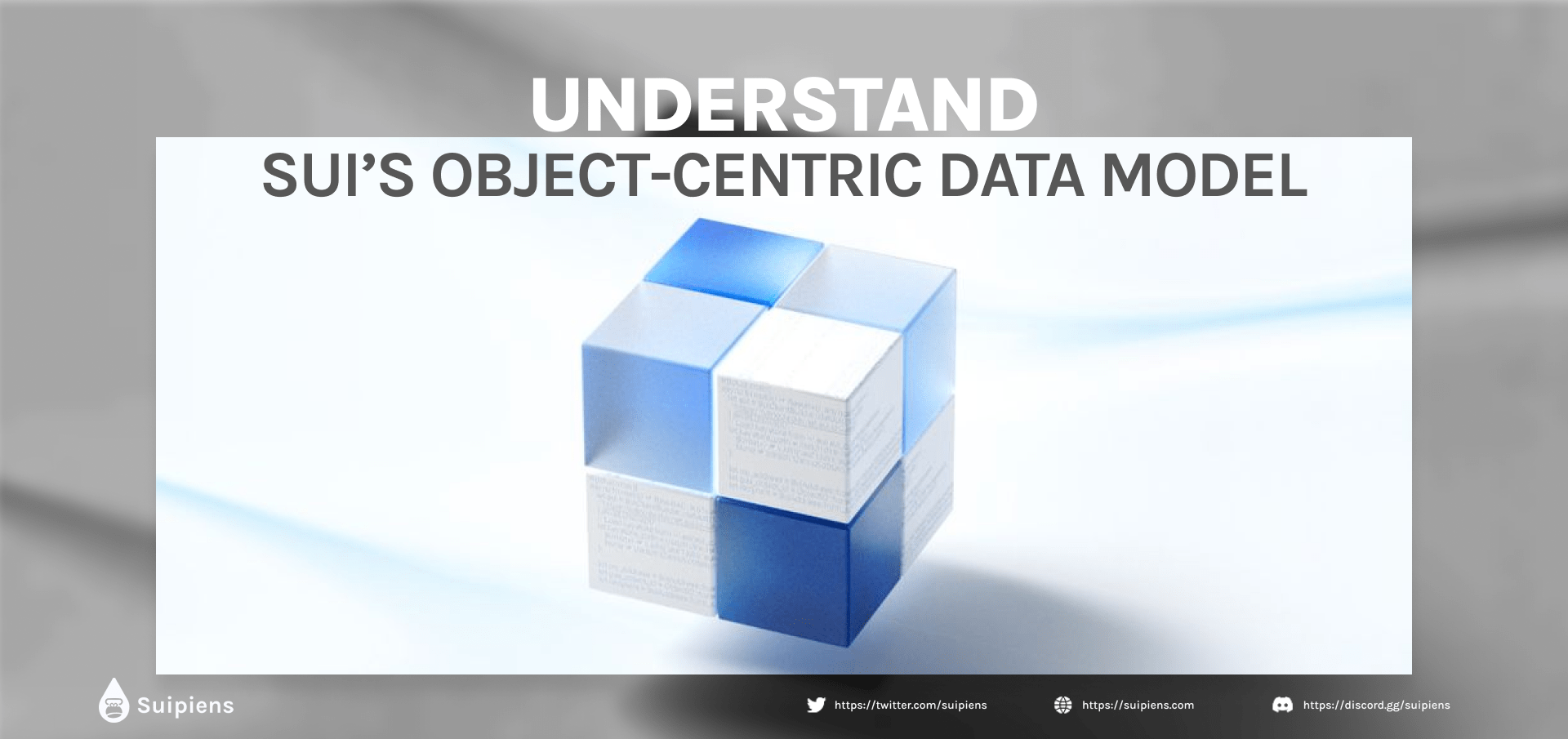Understand Sui’s Object-centric Data Model

Explore how Sui sets itself apart from traditional Layer-1 blockchains and examine the implications for asset control, transaction processing, and the dynamic nature of digital assets.
Sui, a groundbreaking Layer-1 blockchain platform, reimagines the landscape of digital asset ownership with its object-centric data model. In this article, we'll explore how Sui sets itself apart from traditional L1 blockchains and examine the implications for asset control, transaction processing, and the dynamic nature of digital assets.
Sui's Unique Perspective
Unlike most blockchains, where accounts serve as the primary data storage unit, Sui takes a different approach by treating objects as the fundamental building blocks. Objects, representing user-level assets, are programmable entities defined, created, and managed by developers. Notably, these objects and their attributes are stored directly on-chain within the user's account, granting full access and control to the asset owner.
Advantages of Typed Objects
Sui's objects possess distinct characteristics, including ownership, object ID, type, version, and last transaction digest block. This enriches digital assets with accumulated value, context, and utility over time. Builders have the flexibility to customize objects by adding or removing information fields, ensuring the dynamic nature of assets on the platform.
Transformative Asset Ownership
Sui revolutionizes asset ownership through various ownership models. Assets can be owned by a single address, creating individual ownership. Shared ownership involves multiple accounts for authentication, enabling collaborative asset control. Objects can also be owned by other objects, allowing for the creation of unique composable assets. Additionally, immutable objects provide the security of locked assets that cannot be altered.
Efficient Transaction Processing
Sui's object-centric model optimizes transaction processing. Simple transactions, such as payments or asset transfers, can be processed in parallel, as changes to one owned object don't affect others. This parallel processing improves efficiency and reduces latency. Complex transactions involving shared objects require consensus but can still be grouped and processed efficiently, thanks to the independence of each shared object.
Embracing Object Programming on Sui
Sui's object-centric data model opens up a world of possibilities for developers seeking to build on the platform. By diving into object programming, developers can harness the full potential of Sui's object-centric capabilities, enabling them to create innovative and dynamic digital assets. To support developers on this exciting journey, Sui provides a comprehensive tutorial series designed to guide users through the intricacies of object programming and empower them to unlock the platform's immense potential.
Wrapping up
In summary, Sui's object-centric data model introduces a paradigm shift in digital asset ownership. The platform's tutorial series empowers developers to leverage object programming, enabling them to create innovative and dynamic assets. With direct access to objects within their accounts, users have greater control over their assets, while the ability to add, remove, and augment information fields over time ensures their assets remain relevant and adaptable. By embracing Sui's object-centric approach and its optimized transaction processing, individuals can unlock new possibilities in the blockchain landscape and contribute to the ongoing evolution of digital asset ownership.
Be sure to check out Suipiens' website and social media channels to stay up-to-date on all things about Sui Blockchain!

